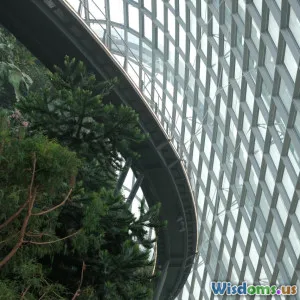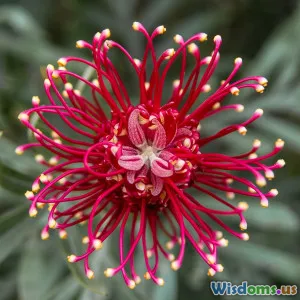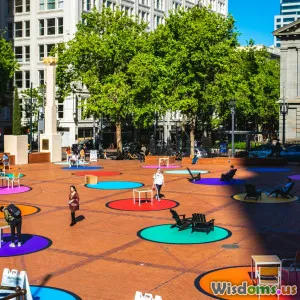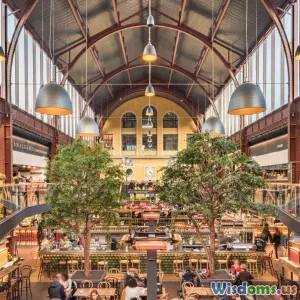
The Secret Benefits of Native Plants in City Garden Design
8 min read Discover how native plants transform city gardens with ecological, aesthetic, and community benefits. (0 Reviews)
The Secret Benefits of Native Plants in City Garden Design
Introduction
Urban gardens are more than just patches of green amidst concrete jungles—they are vital ecosystems that can nurture biodiversity, improve air quality, and enhance the mental wellbeing of city dwellers. While the variety of plants available for city gardens is vast, native plants hold a secret power often overlooked. These are species grown naturally in a region over thousands of years, perfectly adapted to the local climate and soil conditions. What makes native plants so special, and why should urban gardeners prioritize them? This article explores the secret benefits of native plants and reveals how they can revolutionize city garden design.
Understanding Native Plants
Native plants are flora species that have naturally evolved in a particular region without human intervention, forming intrinsic links with local wildlife and ecosystems. Unlike exotic or non-native plants brought from other parts of the world, natives thrive naturally under local conditions, requiring fewer inputs such as water, fertilizers, or pesticides.
Example
For example, species like the Purple Coneflower (Echinacea purpurea) and the Eastern Red Columbine (Aquilegia canadensis) are native to many North American regions and are staples in native garden landscaping. Their evolutionary history has forged strong relationships with indigenous pollinators and animals.
Ecological Benefits
Promoting Biodiversity
Native plants serve as a cornerstone for local biodiversity. They provide food and shelter for native insects, birds, and other wildlife. Pollinators such as bees and butterflies often depend exclusively on specific native plants for nectar and habitat. These mutualistic relationships support healthy population dynamics and help sustain complex ecosystems even in urban settings.
A 2014 study published in Biological Conservation showed gardens with mostly native plants saw an up to 85% increase in native bee abundance compared to gardens dominated by non-natives.
Supporting Local Wildlife
Native plants are not only food sources but also breeding grounds and protective cover for native fauna. For instance, the Monarch butterfly relies almost exclusively on milkweed species native to North America for its full lifecycle. Planting native milkweed in city gardens can help revive declining monarch populations.
Enhancing Soil Health
The deep and often extensive root systems of native plants help with soil aeration, reduce erosion, and promote water infiltration. Moreover, these roots support symbiotic relationships with beneficial soil microbes and fungi, naturally enriching the soil nutrient cycle.
Environmental and Economic Advantages
Reduced Resource Consumption
Because native plants are inherently adapted to their local environments, they generally require less irrigation and fertilizer. For example, the California poppy (Eschscholzia californica) thrives in dry, nutrient-poor soils, requiring minimal watering once established. This characteristic is an immense advantage in water-scarce urban areas, reducing the strain on municipal water supplies.
Low Maintenance
Gardeners who choose native plants typically spend less time and money maintaining their gardens since these plants are more resistant to disease and pests endemic to the area. A well-planned native garden reduces or even eliminates the need for chemical interventions, saving costs and minimizing chemical runoff that can pollute urban waterways.
Air Quality Improvement
Native plants contribute significantly to improving air quality by filtering pollutants and particulate matter. Trees like the American hornbeam (Carpinus caroliniana) and the serviceberry (Amelanchier spp.) excel at trapping airborne contaminants while producing oxygen, benefiting urban dwellers’ respiratory health.
Aesthetic and Psychological Impact
Authentic Sense of Place
Incorporating native plants brings a unique sense of identity and connection to the region’s natural heritage. Landscapes featuring native flora tell a story of local ecology, fostering appreciation for one’s surroundings.
Enhancing Mental Well-being
Natural green spaces have been scientifically proven to reduce stress, improve mood, and enhance cognitive function. City gardens rich with native plants, abundant in local wildlife, create immersive experiences that support mental health. A 2015 study in the Journal of Environmental Psychology established that exposure to biodiverse environments increases emotional restoration.
Challenges and Considerations in Using Native Plants
While native plants provide myriad benefits, thoughtful planning is essential:
- Soil Preparation: Urban soils can be compacted or contaminated, so remediation may be necessary.
- Plant Selection: Choosing species appropriate to the specific microclimate within the city is critical.
- Invasive Species Management: Controlling invasive non-natives ensures that native plants can flourish without competition.
Partnering with local native plant nurseries, botanical gardens, or extension services can guide gardeners toward successful designs.
Case Studies: Success Stories of Native Plant City Gardens
Portland, Oregon
Portland’s Green Streets program incorporates native plants directly into urban stormwater systems. This initiative has not only beautified the city but also improved stormwater retention, reduced urban heat islands, and promoted urban wildlife corridors.
Melbourne, Australia
The Melbourne Urban Forest Strategy prioritizes planting native species to increase canopy cover. Native species' drought tolerance has allowed the city to build green resilience amid climate change-driven heatwaves.
New York City
The New York City Wildflower Week initiative encourages public gardens and private spaces to adopt native wildflowers, helping restore pollinator pathways across urban neighborhoods.
Conclusion
Native plants in city garden design are a wellspring of hidden benefits—ecosystem support, sustainability, cost savings, and community well-being—all wrapped in the beauty of ecological authenticity. By choosing native species, urban gardeners don’t just create green spaces; they craft urban ecosystems that thrive alongside human development. The secret is out: city gardens with native plants are the cornerstone of a sustainable, vibrant urban future. Let’s root our cities deeply in nature’s wisdom.
References
- Tonietto, R.K., & Larkin, D.J. (2014). "The role of native plant species in urban pollinator habitat restoration." Biological Conservation.
- Kellert, S.R., et al. (2015). "The benefits of biodiversity for mental health." Journal of Environmental Psychology.
- Portland Bureau of Environmental Services. (2020). "Green Streets Program Overview."
- Melbourne Urban Forest Strategy. City of Melbourne, 2021.
- New York City Wildflower Week Initiative. 2022.
Rate the Post
User Reviews
Other posts in Landscape Architecture
Popular Posts


















